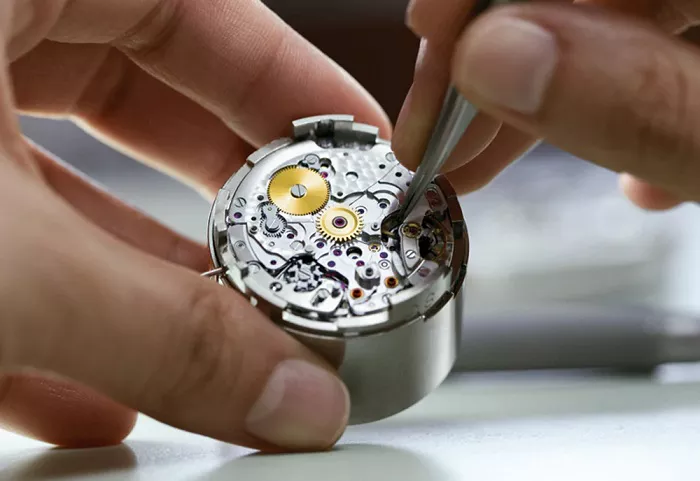Servicing a watch movement is an essential skill in horology, requiring precision, patience, and profound understanding of mechanical intricacies. Proper servicing ensures longevity, accuracy, and reliability of timepieces. This article delves into the detailed steps and techniques involved in servicing a watch movement, focusing on best professional practices. This guide aims to provide clear and thorough instruction for watchmakers and enthusiasts who wish to enhance their servicing capabilities.
How to Service a Watch Movement?
Before beginning any servicing, it is crucial to understand the movement’s basic structure. A watch movement consists of various components working together to measure time: the mainspring, gear train, escapement, balance wheel, and dial train. Each part plays a specific role, and correct handling is vital for successful maintenance.
Preparation for Servicing
Gathering Tools and Equipment
High-quality tools are fundamental. Essential items include screwdrivers of various sizes, tweezers, a loupe, movement holders, cleaning solutions, and oilers. Each tool must be clean, precise, and appropriate for delicate parts.
Workspace Setup
Create a dust-free, well-lit workspace. Organize all tools and parts methodically. A clean, stable surface reduces the risk of losing or damaging tiny components. Adequate lighting and magnification support accuracy.
Disassembly of the Movement
Removing the Movement from the Case
Start by carefully removing the case back with the appropriate opener. Extract the movement gently using movement holders. Avoid touching the dial or hands directly to prevent damage or contamination.
Detaching the Hands
Use specialized hand removers to lift the hour, minute, and second hands. This prevents bending or scratching. Place the hands in a secure container for safekeeping.
Removing the Dial
Loosen dial screws or clips without forcing. Lift the dial with minimal pressure, ensuring not to damage the feet or surface.
Systematic Component Removal
Disassemble the movement step-by-step, beginning with larger parts such as the barrel bridge, gear train bridge, and balance assembly. Keep parts organized in trays or containers labeled by position.
Cleaning the Components
Manual Cleaning Techniques
Mechanical watch parts accumulate oils, dirt, and debris. Use cleaning solutions specifically designed for watch parts. Dip parts in solutions or use ultrasonic cleaning for thorough removal of contaminants.
Drying and Inspection
After cleaning, dry parts carefully with lint-free cloths or compressed air. Inspect each piece under magnification for wear, damage, or corrosion. Replace any parts that fail quality checks.
Lubrication of the Movement
Understanding Lubricants
Different oils and greases are used in watch movements depending on the part’s function and friction levels. Proper lubrication reduces wear and enhances accuracy.
Applying Lubricants
Use precision oilers to apply the correct amount of lubricant sparingly to pivots, escapements, and gear teeth. Over-oiling can attract dirt, while under-oiling causes friction.
Reassembly of the Movement
Step-by-Step Reassembly
Begin by reinstalling the mainspring and barrel. Follow with the gear train, bridges, and escapement components. Use correct torque when tightening screws.
Adjusting the Balance Assembly
Reattach the balance wheel carefully. Ensure the hairspring is not deformed. Check for free and correct movement.
Reinstalling the Dial and Hands
Place the dial securely on its feet and tighten screws. Position the hands at the correct times, usually 12:00, using hand pushers. Confirm that hands move freely without interference.
Timing and Regulation
Initial Testing
Place the movement on a timing machine to measure accuracy in different positions. Record results for reference.
Fine Adjustment
Use the regulator to adjust the rate. Repeat timing tests until the movement runs within acceptable tolerances. Adjust beat error if necessary.
Final Assembly and Quality Control
Sealing the Movement in the Case
Insert the movement back into the case carefully. Ensure the crown and stem function smoothly. Close the case back tightly to maintain water resistance.
Comprehensive Inspection
Check the watch’s functions: winding, setting, date changing, and hand alignment. Verify the timekeeping over a set period for stability.
Conclusion
Servicing a watch movement demands thorough attention to detail, skillful handling, and disciplined process adherence. Each phase, from disassembly to final regulation, plays a crucial role in restoring and maintaining a timepiece’s performance. Mastery of these techniques ensures the preservation of horological heritage and the continuation of flawless timekeeping.
This professional guide provides the essential framework for effective watch movement servicing. With practice and dedication, watchmakers can enhance their craft and uphold the highest standards in mechanical watch maintenance.
Related Topic:

